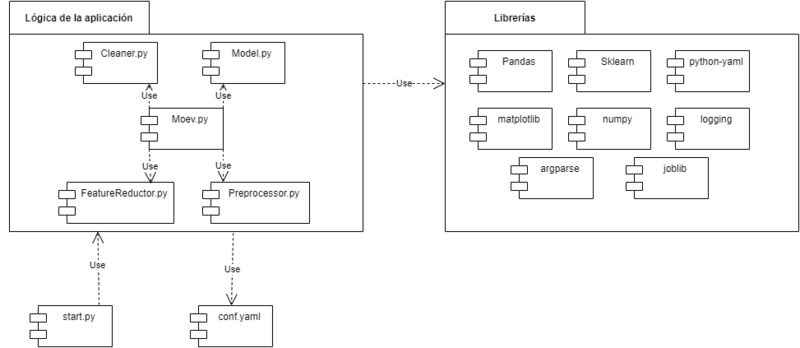Difference between revisions of "MoEv"
SecurityAdm (talk | contribs) |
SecurityAdm (talk | contribs) |
||
| (One intermediate revision by the same user not shown) | |||
| Line 1: | Line 1: | ||
| − | MoEv is a general-purpose tool | + | MoEv is a general-purpose tool for building classification models from labeled datasets developed in Python. MoEv provides the following functionalities: data cleaning, normalization, dimensionality reduction, and hyperparameter optimization. This optimization is developed through the Grid-SearchCV method and also through DaskGridSearchCV. Dask GridSerarchCV provides advanced parallelism especially useful when using MoEv on a supercomputer. MoEv trains evaluate and obtain a report of supervised and semi-supervised/unsupervised learning models. The report includes highly relevant information such as Accuracy, Precision, Recall, F1-Score, FAR, and the confusion matrix. The latest release of the tool accepts as input CSV files or images. |
| + | It has been successfully used in different research areas such as jamming attacks detection on real-time location systems, academic success prediction at educational institutions or to detect network attacks. | ||
The models that can be trained in MoEv are as follows: | The models that can be trained in MoEv are as follows: | ||
| Line 31: | Line 32: | ||
|- | |- | ||
| Stochastic Gradient Descent | | Stochastic Gradient Descent | ||
| + | |- | ||
| + | | Bagging Classifier | ||
| + | |- | ||
| + | | One-class SVM | ||
| + | |- | ||
| + | | Isolation Forest | ||
| + | |- | ||
| + | | Local Outlier Factor | ||
|} | |} | ||
Latest revision as of 08:17, 28 November 2022
MoEv is a general-purpose tool for building classification models from labeled datasets developed in Python. MoEv provides the following functionalities: data cleaning, normalization, dimensionality reduction, and hyperparameter optimization. This optimization is developed through the Grid-SearchCV method and also through DaskGridSearchCV. Dask GridSerarchCV provides advanced parallelism especially useful when using MoEv on a supercomputer. MoEv trains evaluate and obtain a report of supervised and semi-supervised/unsupervised learning models. The report includes highly relevant information such as Accuracy, Precision, Recall, F1-Score, FAR, and the confusion matrix. The latest release of the tool accepts as input CSV files or images.
It has been successfully used in different research areas such as jamming attacks detection on real-time location systems, academic success prediction at educational institutions or to detect network attacks.
The models that can be trained in MoEv are as follows:
| Models |
|---|
| Adaptive Boosting |
| Bagging Classifier |
| Bernoulli Restricted Boltzmann Machine |
| Classification And Regression Tree |
| K-Nearest Neighbors |
| Linear Discriminant Analysis |
| Naive Bayes |
| One-vs-the-rest |
| Quadratic Discriminant Analysis |
| Random Forest |
| Stochastic Gradient Descent |
| Bagging Classifier |
| One-class SVM |
| Isolation Forest |
| Local Outlier Factor |
The internal scheme of MoEv is as follows:
Once the tool is used, the output that MoEv offers is similar to the following:
KNeighbors_Classifier.joblib
Accuracy for model is: 0.964116
Classification report:
precision recall f1-score support
0 0.987845 0.942207 0.964486 198137
1 0.941017 0.987583 0.963738 184986
micro avg 0.964116 0.964116 0.964116 383123 macro avg 0.964431 0.964895 0.964112 383123 weighted avg 0.965235 0.964116 0.964125 383123
Confusion Matrix:
[[186686 11451] [ 2297 182689]]
MoEv can be downloaded from the following link [1]
